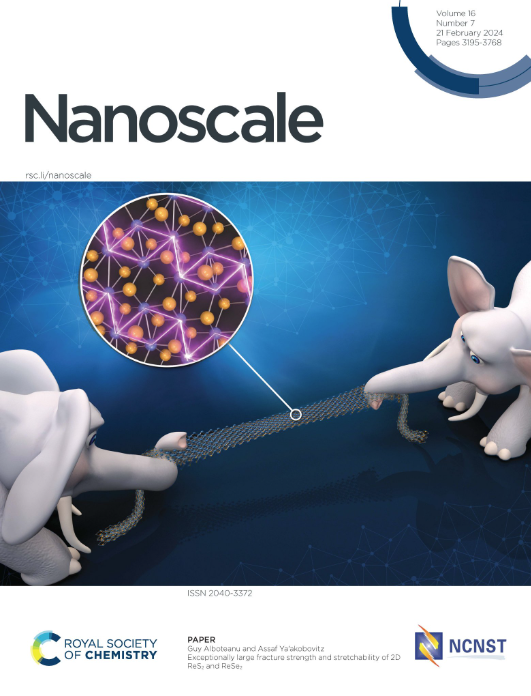基于密度泛函理论的SnSSe均匀双分子层中界面硫元对介导、双轴应变和层间距离可调的2型波段对准
IF 5.8
3区 材料科学
Q1 CHEMISTRY, MULTIDISCIPLINARY
引用次数: 0
摘要
本文基于密度泛函理论,研究了具有不同界面硫对构型的均匀双层Janus硫化物硒化锡(SnSSe)的电子性质。本文以层间波段对准为研究对象,系统地研究了层间距离调制和施加的双轴应变的影响。其次,从平面内和层间原子轨道相互作用、电子-空穴波函数的空间分离、导带的能量扩展等方面系统地分析了激子态的空间分布和寿命。不对称界面硫对表现出有限的层间偶极矩和层间电场。这减少了能量带隙,并在各个SnSSe层之间诱导出突出的2型带对准,其中带边缘布洛赫态在交替层中强烈定位。增加层间距离和施加双轴拉伸应变可以保持2型层间带的排列。相反,减小层间距离和双轴压缩应变显著改变了层间原子轨道相互作用,湮灭了2型能带对准,由于能带边缘布洛赫态的强烈离域,能带间隙急剧减小。因此,本研究证明了具有层间镜像对称性破碎的均匀双层SnSSe具有应变可调谐的2型带对准和层间激子性质。本文章由计算机程序翻译,如有差异,请以英文原文为准。

Interfacial chalcogen pair-mediated, biaxial strain- and interlayer distance-tuneable type-2 band alignment in an SnSSe homogeneous bilayer: a density functional theory-based analysis
This study presents a comprehensive density functional theory-based investigation of the electronic properties of homogeneous bilayer Janus tin sulphide selenide (SnSSe) with different interfacial chalcogen pair configurations. This study focuses on interlayer band alignment, wherein the effects of interlayer distance modulation and applied biaxial strain are methodically studied. Next, the spatial distribution and lifetime of excitonic states are systematically analysed from the in-plane and inter-layer atomic orbital interactions, spatial separation of electron–hole wave functions, and spread of the conduction band in energy. Asymmetric interfacial chalcogen pairing exhibits a finite interlayer dipole moment and interlayer electric field. This reduces the energy bandgap and induces prominent type-2 band alignment between individual SnSSe layers, where band edge Bloch states are strongly localized in alternating layers. An increasing interlayer distance and applied biaxial tensile strain were found to retain the type-2 interlayer band alignment. In contrast, reducing the interlayer distance and biaxial compressive strain significantly altered interlayer atomic orbital interactions and annihilated the type-2 band alignment with a sharp reduction in the energy bandgap owing to the strong delocalization of band edge Bloch states. Thus, this study demonstrates the strain tuneable type-2 band alignment and interlayer excitonic properties of homogeneous bilayer SnSSe with broken interlayer mirror symmetry.
求助全文
通过发布文献求助,成功后即可免费获取论文全文。
去求助
来源期刊

Nanoscale
CHEMISTRY, MULTIDISCIPLINARY-NANOSCIENCE & NANOTECHNOLOGY
CiteScore
12.10
自引率
3.00%
发文量
1628
审稿时长
1.6 months
期刊介绍:
Nanoscale is a high-impact international journal, publishing high-quality research across nanoscience and nanotechnology. Nanoscale publishes a full mix of research articles on experimental and theoretical work, including reviews, communications, and full papers.Highly interdisciplinary, this journal appeals to scientists, researchers and professionals interested in nanoscience and nanotechnology, quantum materials and quantum technology, including the areas of physics, chemistry, biology, medicine, materials, energy/environment, information technology, detection science, healthcare and drug discovery, and electronics.
 求助内容:
求助内容: 应助结果提醒方式:
应助结果提醒方式:


